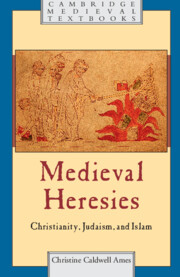Even as state persecution has shifted its focus to who people are, rather than what they believe, the modern world can still look a little medieval. In 2013, centuries after the Jewish community in Amsterdam in 1656 imposed its most severe ban upon the philosopher Baruch Spinoza (1632–77) for heresy, the community considered revoking it. The final decision was to let the ban remain in force. As Chief Rabbi of Amsterdam Pinchas Toledano asked, “Does freedom of speech mean that we in our synagogue should spread the denial of God's existence to the extent that it destroys our heritage and the pillars on which Judaism rests? ” Ibn Taymiyah may have died under a cloud of heresy in 1328, but modern Islamists have discovered in him an inspirational defender of Islam's purity, opposed to coexistence with, and the influence of, non-Muslims. Modern Christian denominations, both Catholic and Protestant, still occasionally conduct heresy trials over matters of theology, social teaching, and ecclesiastical discipline.
“The pillars on which Judaism [and Christianity, and Islam] rest” – whether sacred text, tradition, reason, direct revelation, collective consensus – are still, often frustratingly for believers, both fragile and contested, and indispensable. The individual can still be set against the community, and toleration can discover its limits in the essential, yet oddly changeable, foundations of faith. Our medieval events left legacies for modern Judaism, Christianity, and Islam, even as believers grapple with some of the same questions about right and wrong belief that their predecessors did. To understand better religious heresy in both the medieval and modern worlds, we should step back and take stock. What are the conclusions from our history of medieval heresies?
We should note first some differences and similarities among these histories in all three religions. The most obvious, and important, difference is a stateless Judaism, with Jews living in minority communities under Christian and Muslim rule.
